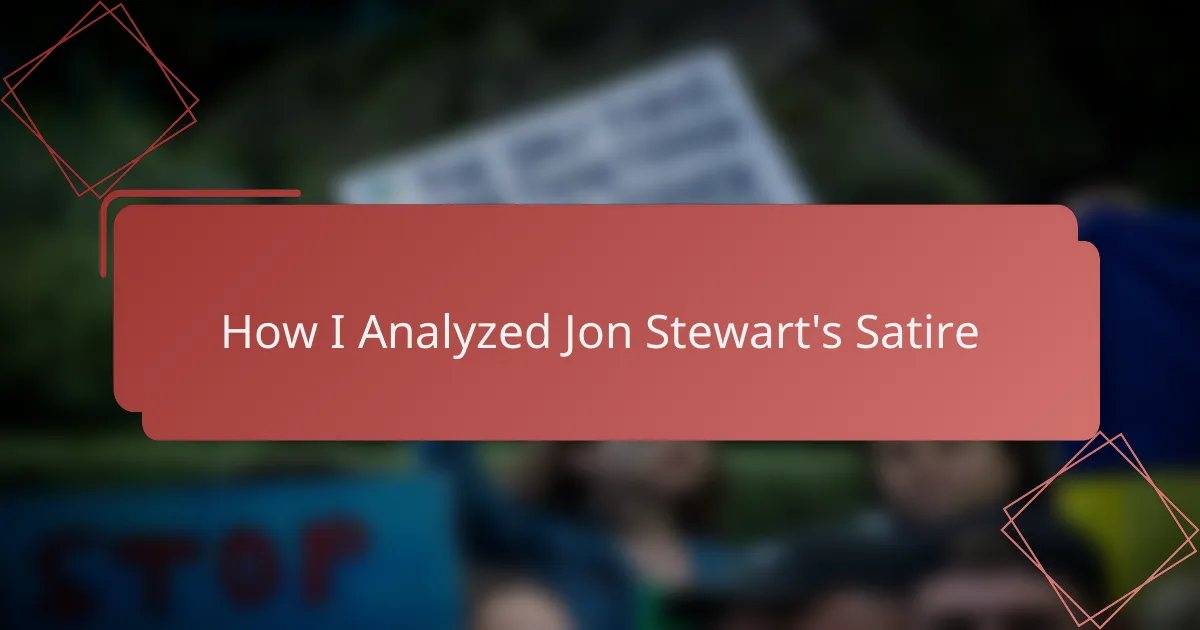Key takeaways
- Political satire effectively exposes political flaws while encouraging critical thinking through humor and exaggeration.
- Understanding satire requires attention to the intent behind the humor, balancing critique with appreciation for its craft.
- Analyzing commentary like Bill Maher’s benefits from recognizing specific satirical elements and reflecting on personal biases.
- Developing analysis skills transforms passive viewing into active engagement, enhancing both comprehension and critique of satire.
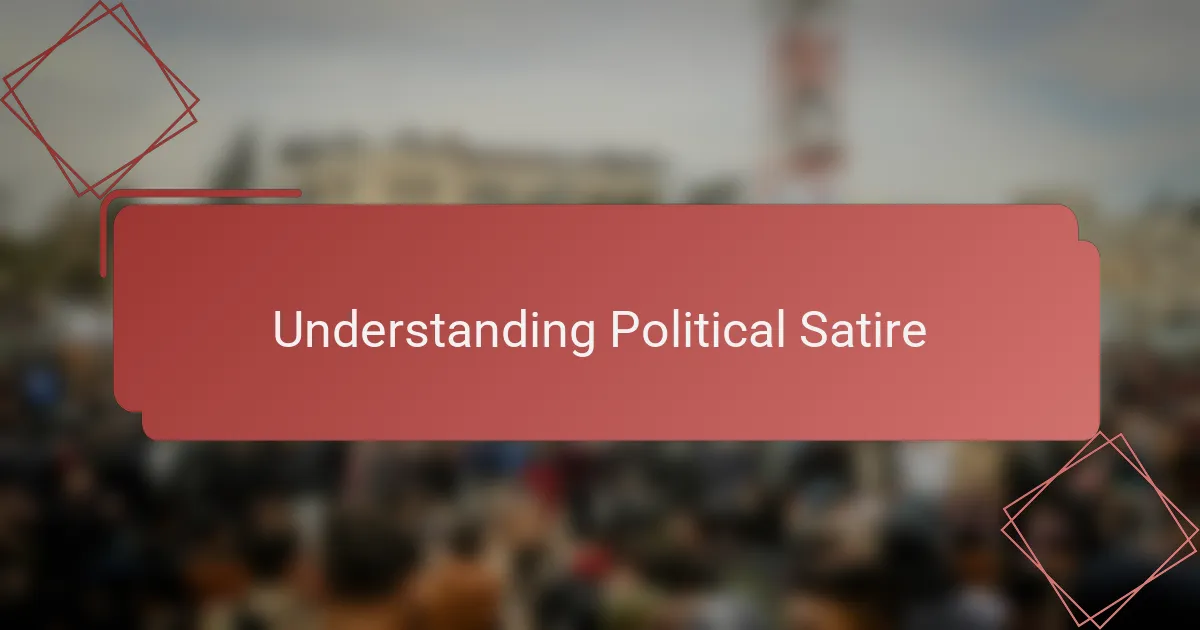
Understanding Political Satire
Political satire, to me, feels like a double-edged sword—sharp enough to cut through political jargon but playful enough to provoke thought without losing humor. When I watch Bill Maher’s commentary, I notice how satire operates not just as entertainment but as a mirror reflecting societal tensions, often pushing boundaries to challenge viewers.
What stands out is the careful balance between exaggeration and truth, which makes political satire so powerful. Over the years, I’ve realized how satire can stimulate critical thinking by highlighting contradictions and absurdities in politics in a way straightforward reporting can’t.
- Uses humor and irony to expose political flaws
- Highlights contradictions within political systems
- Encourages audiences to rethink established beliefs
- Balances critique with entertainment for broader impact
- Often employs exaggeration to underline key political points
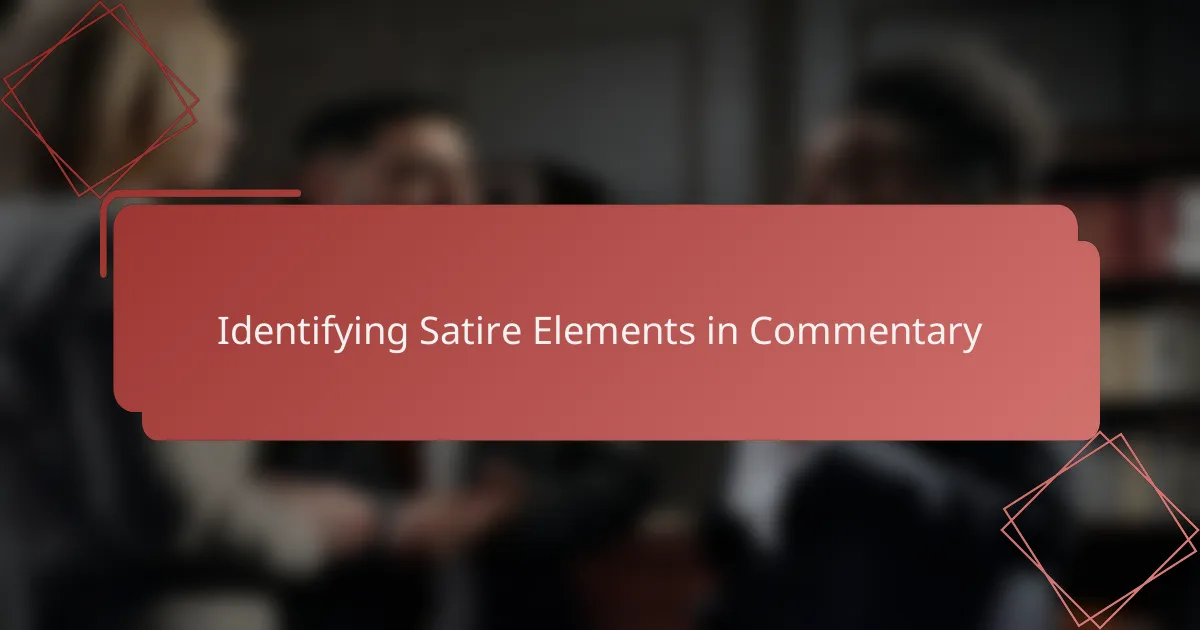
Identifying Satire Elements in Commentary
Spotting satire in commentary like Bill Maher’s isn’t always straightforward. I’ve found myself pausing mid-episode, asking, “Is this serious, or is he just twisting reality for laughs?” That blend of irony and humor can mask sharp criticism, making it a bit of a puzzle to unpack.
One thing I pay close attention to is exaggeration. When Maher takes a political stance and stretches it to an absurd extreme, it’s rarely just for comedic effect. I see it as a deliberate nudge, prompting me to question the original argument’s validity or logic. It’s like a spotlight on the flaws we might otherwise overlook.
Humor also acts as a social icebreaker in his commentary. Through clever jokes, Maher lets down defenses and invites viewers—even those resistant to criticism—to engage with challenging ideas. I’ve noticed this tactic works well, making heavy political topics feel more approachable without sacrificing depth.
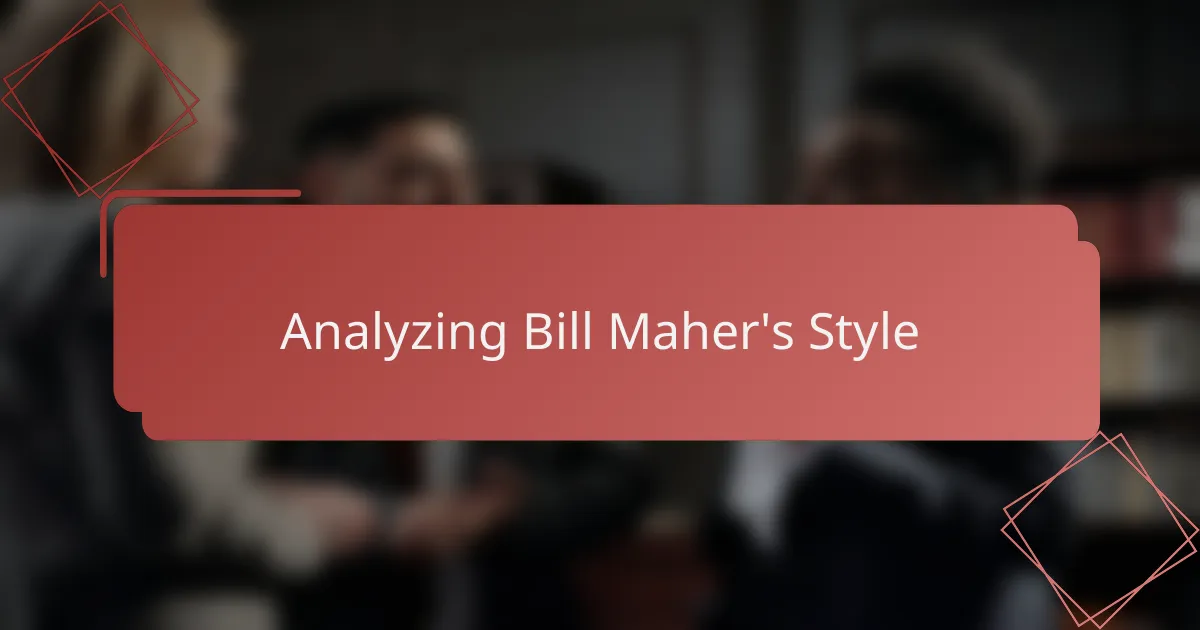
Analyzing Bill Maher’s Style
Bill Maher’s style strikes me as a fusion of biting sarcasm and conversational ease. I often find myself caught between chuckling at his wit and pausing to consider the deeper point he’s making beneath the punchline. Have you ever noticed how his delivery feels more like a candid chat in your living room than a formal lecture?
His rhythm and timing are crucial to the impact of his commentary. I remember watching one segment where a well-placed pause before a punchline made the critique hit harder than expected. It’s that cadence, almost like storytelling, that pulls me in and keeps me engaged even when the topics are heavy.
What intrigues me most is his fearless approach to controversial subjects. Maher seems to thrive on pushing buttons and provoking reactions, but there’s always a method behind the madness. It made me wonder: is his style more about sparking debate or steering the audience toward a particular viewpoint? From my perspective, it’s a bit of both, which makes analyzing his style endlessly fascinating.
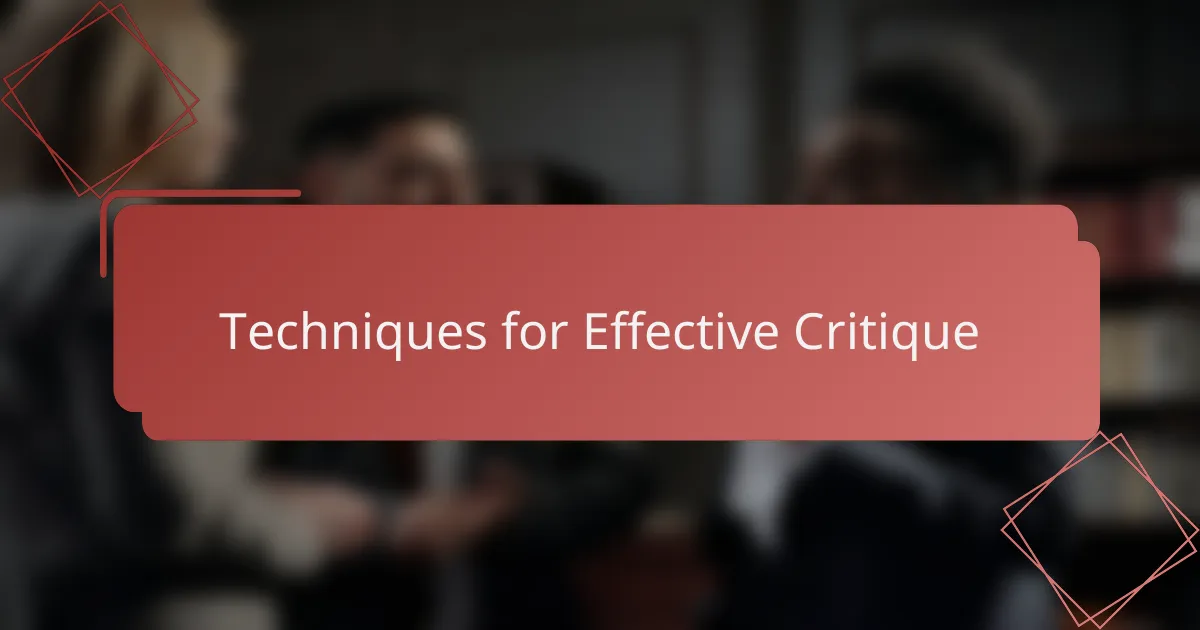
Techniques for Effective Critique
Getting the hang of effective critique, especially when dealing with sharp political satire, requires me to slow down and really listen—not just to the words but to the intention behind them. I ask myself, “What is the commentator trying to reveal or challenge here?” This helps me focus my response on the core message, rather than getting distracted by surface-level humor or provocation.
I’ve also learned that grounding my critique in specific examples makes all the difference. Pointing out a particular joke, phrase, or exaggeration and explaining why it works or misses the mark gives my analysis weight and clarity. Without this, critiques risk feeling vague or overly subjective, which defeats the purpose of meaningful discussion.
Finally, I find it helpful to balance honesty with respect. It’s tempting to tear apart commentary that doesn’t align with my views, but I try to recognize the craft involved, even when I disagree. This approach not only keeps the conversation constructive but also lets me appreciate the complexity behind political satire, making my critique richer and more nuanced.
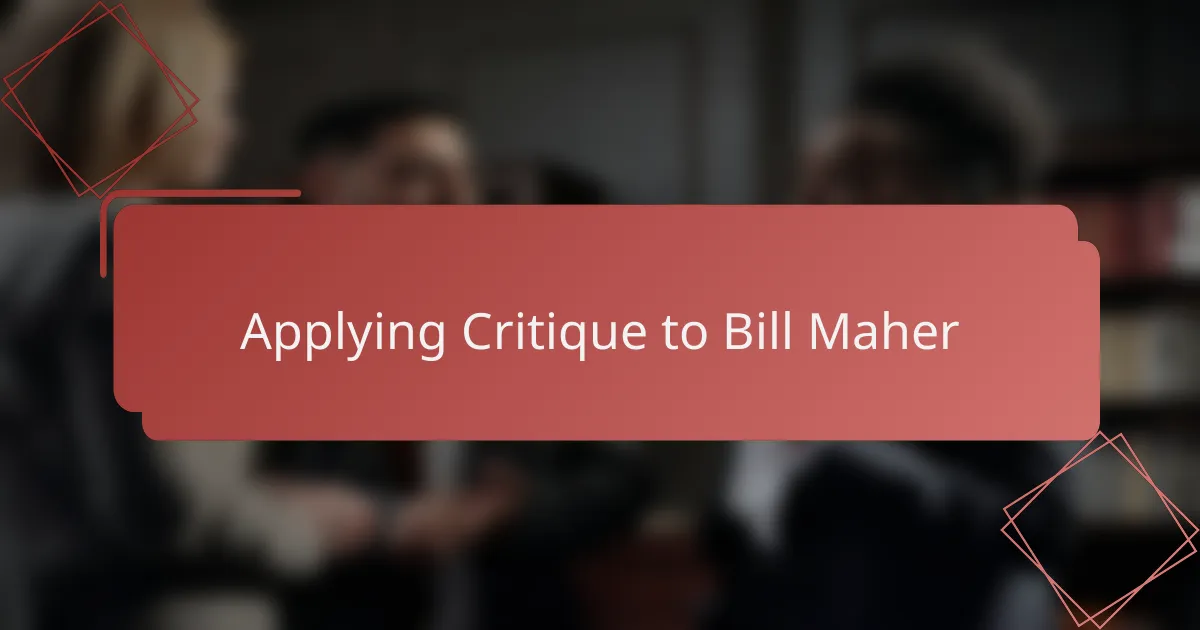
Applying Critique to Bill Maher
When applying critique to Bill Maher, I found that dissecting his sharp wit requires more than just surface-level observation. His commentary often blends humor with serious political insights, so pausing to reflect on the underlying messages helped me understand the full impact of his satire. I remember catching myself both laughing and mentally wrestling with his points, which showed me that effective political satire can provoke thought and emotion simultaneously.
One detail that stood out was Maher’s tendency to challenge conventional narratives with a mix of cynicism and sincerity. This balance is tricky to unpack because it invites the audience to question their own biases while still entertaining them. Here’s how I approached my critique:
- Identified moments where Maher’s humor overshadowed the political message
- Highlighted instances of bias or oversimplification in his arguments
- Analyzed the emotional effect his delivery had on me as a viewer
- Acknowledged the role of satire in opening difficult conversations
- Considered how his commentary might resonate differently across diverse audiences
Reflecting on these points allowed me to appreciate the complexity behind Maher’s style rather than dismissing it outright.
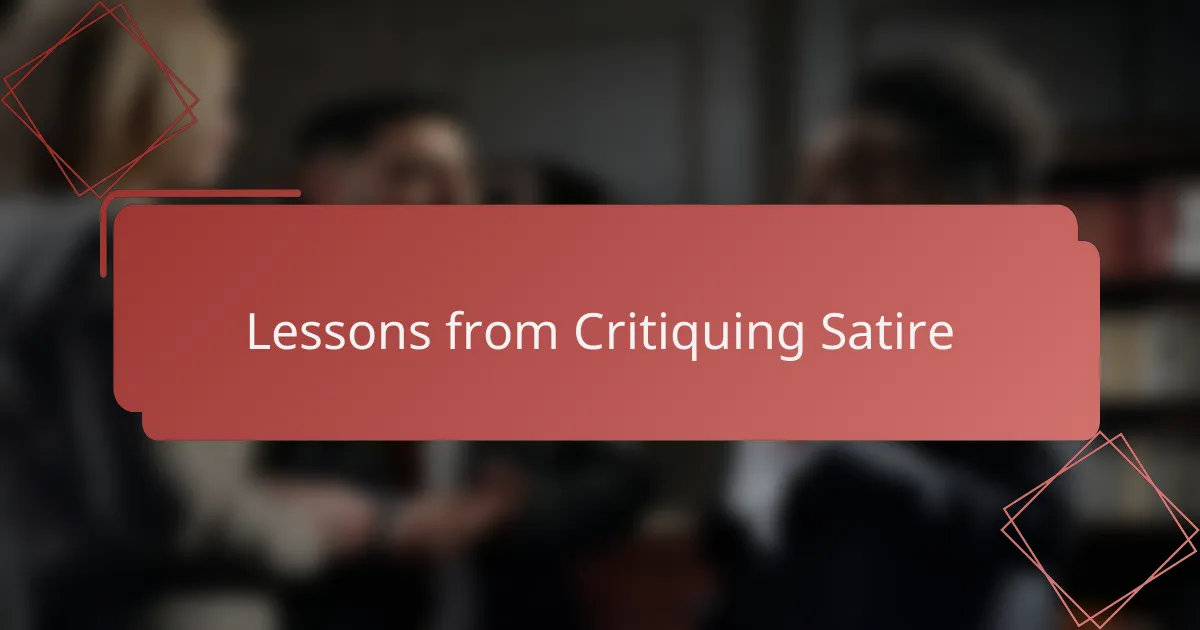
Lessons from Critiquing Satire
Critiquing Bill Maher’s commentary taught me how satire can be a double-edged sword—it entertains while provoking thought, but it can also blur lines between humor and offense. I remember feeling a mix of admiration for his wit and frustration over moments when the punchline missed the nuance, reminding me that satire demands a delicate balance.
What stuck with me most was how important it is to approach satire with an open mind, yet remain critical of its underlying messages. The experience sharpened my ability to separate genuine critique from superficial jabs, which I think is a skill anyone diving into political satire analysis should cultivate.
- Understand the difference between satire’s humor and its intended critique
- Recognize when satire reinforces stereotypes or biases unintentionally
- Analyze the context to uncover deeper political or social commentary
- Balance appreciation for comedic craft with awareness of potential harm
- Reflect on personal reactions to better gauge satire’s impact on diverse audiences

Improving Personal Satire Analysis Skills
Developing sharper satire analysis skills has been a game-changer for me in critiquing political commentary like Bill Maher’s. At first, I found myself reacting emotionally without fully grasping the layers beneath his jokes. But as I deliberately focused on identifying devices like irony, exaggeration, and cultural references, my understanding deepened and my critiques became more balanced and insightful.
One practical approach that helped was breaking down Maher’s commentary line by line, noting what each satirical element aimed to highlight or criticize. This method forced me to pause and think rather than jump to conclusions. I encourage you to try this technique too, as it transforms passive watching into active analysis, strengthening both your appreciation and critique of satire.
- Pay close attention to the tone—Is it sarcastic, deadpan, or playful?
- Identify the target—Who or what is being criticized or mocked?
- Analyze exaggerations—What’s blown out of proportion and why?
- Recognize cultural or political references—How do they shape the message?
- Reflect on your own biases—Are your responses influenced by personal beliefs?
- Practice summarizing the main point before evaluating it—This clarifies your own understanding.



